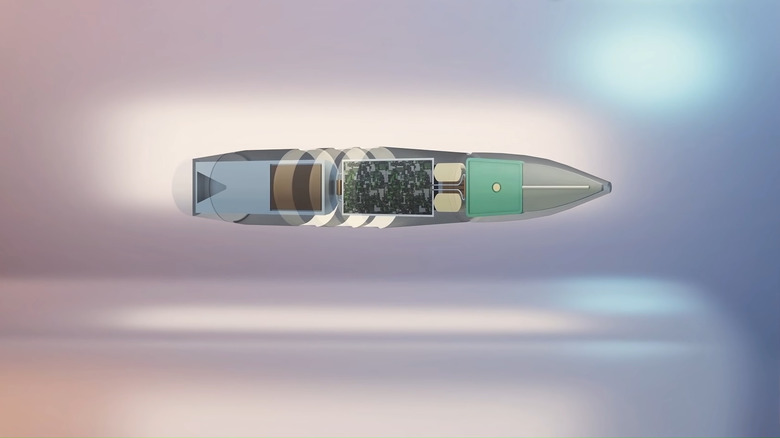Smart Bullets Explained: How Do They Work?
From archery and catapults to missiles and bullets, ranged weaponry has undergone a huge transformation already and it does not seem like it will slow down anytime soon. Bullets caused a huge revolution after their introduction in the late 1300s, in terms of precision, accuracy, speed, distance, and countless other factors — but what if they were made to be 'smarter'?
A sniper is a military marksman trained to take down targets from an enormous distance away, making their job much more complex than just aiming and pulling the trigger. It means they also have to account for factors like wind speed, direction, distance, and in some cases, even the curvature of the earth, making sure the bullet's flight path doesn't get altered and it actually reaches the target. This adds up to a ton of work for a single shot and most of the time, one shot is all they might get so accuracy is especially vital when it comes to military snipers.
But, as it turns out, their job does not have to be as hard anymore, all thanks to the introduction of guided rounds or 'smart' bullets.
What are Smart Bullets?
Smart Bullets are simply regular bullets with a guidance system incorporated into them. Think of a bullet that can not only guide itself to a target but also can correct its path mid-flight in case of any alteration — it's no surprise that they are called every sniper's dream.
A project of The Pentagon's Defense Advanced Research Projects Agency (DARPA), this exciting piece of military weaponry has been named Extreme Accuracy Tasked Ordnance, or EXACTO for short. This project concerns itself with making .50 caliber bullets into self-guided rounds that can home in on a specific target.
An EXACTO bullet can do most of the snipers' work for them and is also invulnerable to other factors beyond the snipers' control like unforeseen crosswinds. Another perk of guided rounds is that it makes taking down moving targets easier.
How do they work?
Seeing as this is a classified project, DARPA has not seen fit to divulge the exact science and technology behind the EXACTO bullet, but what they have revealed is that the EXACTO bullet had been developed with 'optical sighting technology' to increase the "day and nighttime range over current state-of-the-art sniper systems". This has led to speculation that the technology involves the incorporation of optical sensors in the crest of the bullet and fins on its tail end to facilitate altering the bullet's trajectory if needed.
Basically, this means that the bullet pinpoints and locks onto a target marked by a laser using its optical sensors, while the tail end of the bullet has 'fins' that can be used to correct its flight path if it seems like it is going off course. A YouTube video of a live-fire test released by DARPA demonstrates how an EXACTO bullet aimed at another point changed course in an extremely sharp manner in mid-air to strike the intended target.
The agency released another demonstration video on YouTube, this time with moving targets, where both an experienced marksman and a complete novice attempted and succeeded in hitting a moving target with an EXACTO bullet. This not only showcased the success of the bullet's self-guiding technology but also backed the agency's claim that the system could even be used by a first-time shooter.
Current affairs of smart bullets
After the live-fire tests on moving targets, the DARPA program manager, Jerome Dunn stated "This live-fire demonstration from a standard rifle showed that EXACTO is able to hit moving and evading targets with extreme accuracy at sniper ranges unachievable with traditional rounds."
But as with all things with this many perks, the technology has to have some drawbacks. If the system uses a laser pointer to mark targets, a big chance of the target being alerted is created, while also potentially giving away the location of the origin of the laser. Not only that, the system practically seems like it would need a rather lasting power supply. The cost of creating such a system and deploying it with the troops also has to be taken into consideration.
In 2014 it was announced that DARPA was developing an EXACTO system weighing only 46 pounds, with a power supply that would last 14 hours, but no solid news has been heard about it since then. The project's classified nature could mean that either it has been successfully incorporated into the US military service and its technology or it has been abandoned for being too expensive/impractical. But the first option seems to be the more plausible one, given the sheer implications of such a piece of military technology that almost guarantees striking its target every time.

